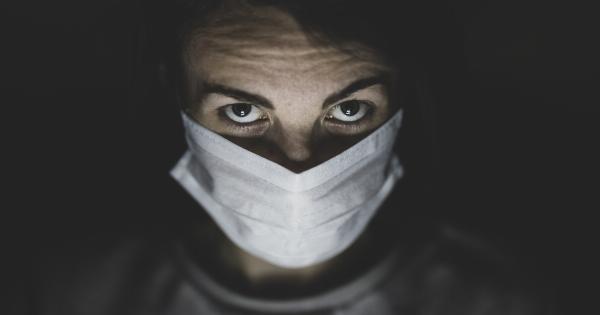Children with cancer are particularly vulnerable to infections due to their weakened immune systems. Hospital settings, while essential for receiving the best possible care, can also be potential breeding grounds for harmful bacteria and viruses.
Preventing hospital-acquired infections in these children is crucial to ensure their well-being and successful treatment. In this article, we will explore various strategies and guidelines to minimize the risk of infections and create a safer environment for children with cancer.
Importance of Infection Prevention
Preventing hospital-acquired infections in children with cancer is of utmost importance for several reasons. Firstly, infections can lead to prolonged hospital stays, delayed treatments, and increased healthcare costs.
Moreover, children with cancer already face numerous challenges in their treatment journey, and infections can further compromise their fragile health. By implementing effective infection prevention measures, we can significantly improve the overall outcomes and quality of life for these young patients.
Hand Hygiene
Hand hygiene is the most fundamental and critical measure in preventing the spread of infections, not only in hospitals but also in various other settings.
Healthcare professionals, parents, and visitors should practice proper hand hygiene before and after any contact with a child undergoing cancer treatment. The World Health Organization recommends washing hands with soap and water for at least 20 seconds or using an alcohol-based hand sanitizer when soap and water are not available.
Personal Protective Equipment (PPE)
Healthcare professionals and caregivers should utilize appropriate personal protective equipment (PPE) to minimize the risk of infections.
This may include gloves, masks, gowns, and goggles, depending on the specific procedures and activities being performed. It is crucial to correctly wear, remove, and dispose of PPE to ensure its effectiveness in preventing the transmission of pathogens.
Vaccinations
Vaccinations play a vital role in preventing infections in children with cancer. It is essential to ensure that all recommended vaccinations are up to date for both the child undergoing treatment and those in close contact with them.
Vaccines such as influenza, pneumococcal, and varicella can significantly reduce the risk of contracting these infectious diseases, which may have severe consequences for children with compromised immune systems.
Cleaning and Disinfection
Maintaining a clean and disinfected environment is crucial to prevent infections in hospital settings. Regular cleaning and disinfection of surfaces, medical equipment, and toys can help eliminate harmful pathogens.
Healthcare facilities should follow strict protocols for cleaning and ensure the use of appropriate disinfectants that are effective against a wide range of microorganisms.
Isolation Precautions
Isolation precautions should be implemented when necessary to prevent the spread of infections to children with cancer.
Depending on the specific infection, the child may be placed in a private room or in a room with other children with the same infection. Healthcare personnel should strictly adhere to isolation protocols and use proper protective measures to minimize the risk of transmission.
Safe Food Handling
Proper food handling and preparation are crucial to prevent foodborne infections in children with cancer.
All caregivers, including hospital staff and parents, should ensure food safety practices, such as washing hands before handling food, storing and cooking foods at appropriate temperatures, and avoiding cross-contamination. Additionally, offering foods that are low in bacterial count, such as freshly cooked or prepared items, can further reduce the risk of infections.
Awareness and Education
Raising awareness and providing education to healthcare professionals, parents, and visitors is key to preventing hospital-acquired infections in children with cancer.
Hospitals should conduct regular training sessions on infection prevention practices, emphasizing the importance of hand hygiene, proper use of personal protective equipment, and other essential measures. Parents and visitors should also be educated about their role in infection control and the specific needs of children with compromised immune systems.
Avoiding Crowded Spaces
Children with cancer have a higher susceptibility to infections, making it essential to limit their exposure to crowded spaces. Hospitals should implement strategies to minimize overcrowding in waiting areas and child-friendly zones.
This can be achieved by scheduling appointments wisely, allocating separate waiting areas for children with cancer, and encouraging virtual consultations or telemedicine when appropriate.
Regular Surveillance and Monitoring
Regular surveillance and monitoring of infections are crucial in identifying potential risks and implementing timely interventions.
Healthcare facilities should have robust surveillance systems in place to track and analyze infection data, including specific information related to children with cancer. This allows for the identification of trends, implementation of targeted interventions, and continuous improvement of infection prevention measures.
Conclusion
Preventing hospital infections in children with cancer requires a multi-faceted approach that encompasses various strategies.
By prioritizing hand hygiene, utilizing personal protective equipment, promoting vaccinations, maintaining cleanliness, implementing isolation precautions, ensuring safe food handling, and raising awareness, we can significantly reduce the risk of infections in this vulnerable population. Ongoing surveillance and monitoring further enhance infection prevention efforts, allowing for continuous improvement and better outcomes for children with cancer.





























